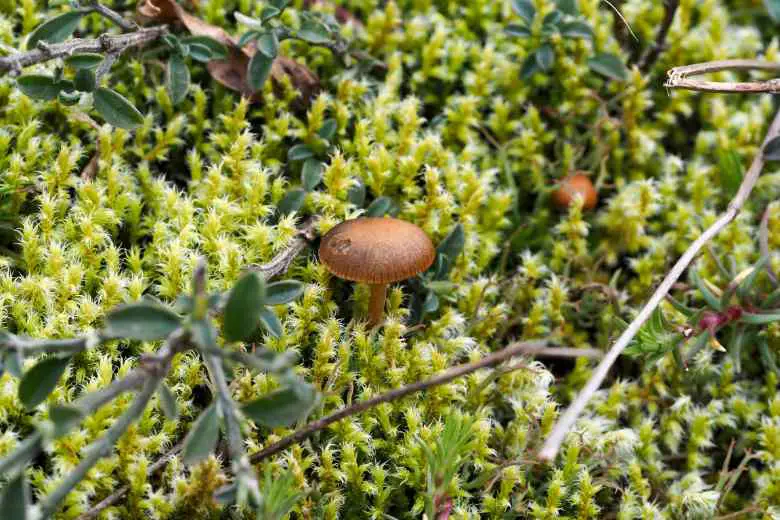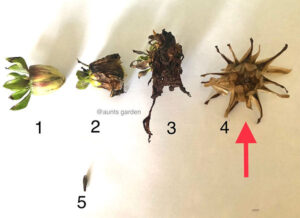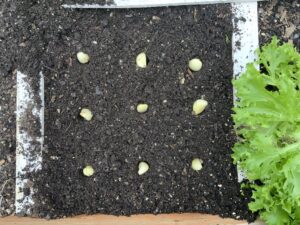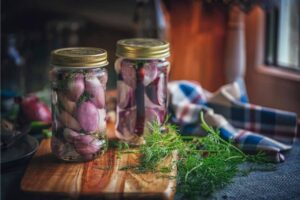
The Montana Mushroom Field Guide is an essential resource for anyone interested in learning more about the various types of mushrooms that can be found in Montana. This guide provides detailed descriptions and photographs of different species of mushrooms, as well as information on their habitats and edibility.
It also provides information on mushroom identification, gathering, and preparation techniques. Whether you are a beginner or an experienced mycologist, the Montana Mushroom Field Guide will provide you with the information you need to explore the wonderful world of mushrooms in Montana.
Overview of Edible Mushrooms Found in Montana
Edible mushrooms are a delicacy enjoyed by foodies and culinary enthusiasts alike! Montana is home to a wide variety of edible mushrooms, providing the perfect source for a flavorful and unique dish. From the flavorful chanterelle to the meaty puffball, Montana has a variety of edible mushrooms to choose from.
Both delicious and nutritious, these mushrooms can be used in a variety of dishes and can bring an interesting and unique flavor to any meal. So don’t wait – explore the edible mushrooms found in Montana today and discover a flavorful and unique culinary experience!
Identification Tips for Edible Mushrooms
Identifying edible mushrooms can be a fun and rewarding hobby, but it’s essential to be extremely cautious, as many edible mushrooms have toxic look-alikes. Eating wild mushrooms without proper identification can be extremely dangerous, even lethal. Always consult an expert mycologist if you are unsure about the identification of any mushroom. Here are some general identification tips for a few common edible mushrooms:
-
Chanterelles (Cantharellus spp.):
- Orange to yellow color.
- False gills, which appear as wrinkled, vein-like ridges.
- Fruity aroma, resembling apricots.
- Always double-check, as they can be confused with toxic species.
-
Morels (Morchella spp.):
- Honeycomb appearance with a network of ridges and pits.
- Hollow inside from the tip of the cap down through the stem.
- Never eat raw; always cook before consuming.
- Beware of false morels, which are highly toxic.
-
Puffballs (Lycoperdon spp. and others):
- Round, white, and firm when young.
- Cut in half to ensure there’s no developing structure inside (indicating a toxic Amanita).
- They should be entirely white inside; any discoloration means they are too old.
-
Oyster Mushrooms (Pleurotus ostreatus):
- Grow in shelf-like clusters on wood.
- Gills run down the short, off-center stem.
- Smell is often described as anise-like or seafood-like.
- Check local species, as look-alikes may exist.
-
Shaggy Mane (Coprinus comatus):
- White with a tall, cylindrical cap that becomes bell-shaped.
- The cap has a shaggy appearance, and the gills liquefy as they age.
- Only consume when young and firm.
-
Chicken of the Woods (Laetiporus spp.):
- Bright orange or yellow, growing in shelves on trees.
- Texture and taste similar to chicken meat.
- Can cause allergic reactions in some people; try a small amount first.
-
Porcini (Boletus edulis):
- Large, brown cap.
- White to yellow pores underneath the cap, not gills.
- Thick and often swollen stem.
-
Field Mushroom (Agaricus campestris):
- Similar to common store-bought mushrooms.
- White cap, pink to brown gills.
- Smells like anise, not chemical or unpleasant.
- Many toxic look-alikes; exercise extreme caution.
Important Tips:
- Always consult an experienced mycologist or use reputable field guides.
- Never eat a wild mushroom unless you are 100% certain of its identification.
- If foraging, obey local laws and guidelines regarding wild harvesting.
- Start by learning the toxic mushrooms in your area to avoid them.
- Consider joining local mycology clubs or groups.
- Different regions may have different species and variations; be aware of local specifics.
Remember, the saying goes: “When in doubt, throw it out.” It’s better to be safe than sorry when dealing with wild mushrooms.
How to Prepare Edible Mushrooms
Want to try something new and exciting in the kitchen? Edible mushrooms are a great choice! With a wide variety of flavors, textures, and colors to choose from, mushrooms can be a great way to bring an interesting new flavor to your meals.
To get started, you’ll need to make sure you’re using mushrooms that are safe to consume. Once you’ve picked out the right mushrooms, you’ll need to clean and prepare them. Start by brushing off any dirt with a soft brush and then rinsing them in cold water.
Slice or dice your mushrooms as desired and then sauté in butter or oil for a few minutes. If you’re looking for an even deeper flavor, consider marinating them in a mixture of oil, herbs, and spices overnight before cooking.
Once they are cooked, incorporate them into your favorite recipes or enjoy them as a side dish. With a bit of knowledge and preparation, edible mushrooms can be a delicious addition to your meals.

Common Toxic Mushrooms Found in Montana
Mushroom season in Montana is a time of year where the beauty of nature is on full display – but it’s also a time to be aware of the danger of toxic mushrooms.
The state of Montana is home to a variety of species of mushrooms, some of which can be lethal if consumed. The most common types of toxic mushrooms found in Montana are Galerina marginata, Cortinarius orellanus, Omphalotus olearius, Amanita muscaria, and Amanita gemmata.
All of these mushrooms can cause severe digestive distress, and in some cases, death if ingested. It’s important to be knowledgeable about the mushrooms in the area, as even experienced mushroom hunters can be fooled by their appearance.
To ensure a safe and enjoyable experience for all, be sure to use a field guide and take the time to learn the distinguishing characteristics of these mushrooms.
Safety Tips for Hunting Mushrooms
Hunting mushrooms is a popular activity for nature enthusiasts who enjoy foraging for wild fungi. To ensure a safe harvest, it is important to familiarize yourself with the various types of mushrooms that grow in your area, and to follow a few simple safety tips.
It is most important to never consume a mushroom unless it has been identified by a professional. Take a trusted field guide with you in the woods to help identify mushrooms. Be sure to examine the mushroom closely, taking note of any physical characteristics that can help differentiate it from poisonous mushrooms.
Wear gloves when harvesting mushrooms to avoid coming into contact with any toxins. When in doubt, leave the mushroom in the ground.
Finally, make sure to never eat a mushroom that has been damaged by animals or insects. Following these simple steps will help ensure a safe and enjoyable mushroom-hunting experience.
FAQs About the Montana Mushroom Field Guide
What types of mushrooms does the Montana Mushroom Field Guide cover?
Answer: The Montana Mushroom Field Guide covers over 200 species of mushrooms found in Montana, including edible, medicinal, and poisonous varieties.
How is the Montana Mushroom Field Guide organized?
Answer: The book is organized by genus, with detailed descriptions and photos of each species to help with identification.
Does the Montana Mushroom Field Guide provide information on safe consumption of mushrooms?
Answer: Yes, the Field Guide includes information on safe mushroom consumption, including the need to cook mushrooms to reduce the risk of food poisoning.
Conclusion
The Montana Mushroom Field Guide is an invaluable resource for anyone looking to learn more about the mushrooms found in Montana. It provides detailed information about each species, including descriptions, photos, and locations, making it easy for mushroom enthusiasts to identify different species. The guide also includes safety tips to protect yourself and the environment while harvesting mushrooms. With the help of this guide, mushroom hunters in Montana can safely explore the outdoors and enjoy the unique and varied fungi that can be found in the state.







